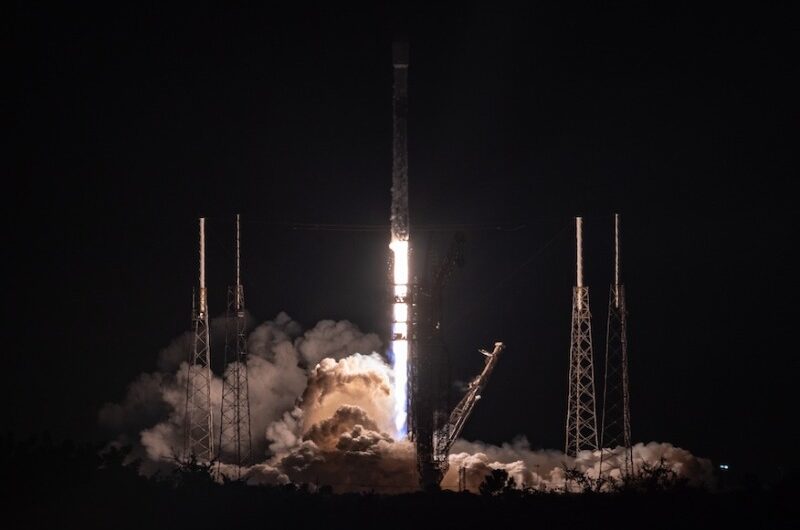AppHarvest Founder and CEO Jonathan Webb on the environmental benefits of consuming locally grown food.
Are we on the verge of a worldwide food crisis? By 2050, the global population is projected to reach 10 billion. The United Nations estimates that it will take 70% more food to feed the Earth’s inhabitants. Jonathan Webb is confident that AppHarvest is the solution. “Technology is how we can grow a lot more food with a lot fewer resources while in the middle of a climate disruption,” says Webb, AppHarvest’s founder and CEO.
Purchasing food grown closer to home offers multiple health benefits. Fresh food tastes better and is more nutritious. Fruits and vegetables begin to lose their nutrients within 24 hours of being picked. Plus, consumers have a better chance of knowing exactly how the produce was grown. And it puts more money back into the community, which helps stimulate the local economy. Eating locally can also help the environment in multiple ways.
In October 2020, the AppHarvest facility opened in Morehead, Kentucky, amid the global COVID-19 pandemic. It cost around $150 million to construct the 60-acre indoor farm in the heart of the Appalachian region. Webb, a graduate of the University of Kentucky’s business school, is hopeful that AppHarvest can help save the environment by allowing people to have more access to fresh produce. The idea is that by eating locally, the population can reduce its carbon footprint because AppHarvest is building a domestic food supply while increasing investment in Appalachia. It doesn’t hurt that sustainable farming practices typically result in better tasting, more nutritious produce.
According to a report from the World Wildlife Fund, global food production accounts for 70% of all fresh water use, 80% of deforestation, 70% of terrestrial biodiversity loss, and a third of greenhouse gases. Webb is banking on AppHarvest being a solution to the environmental crisis.
Why Kentucky Is the Ideal Place to Grow AppHarvest
The high-tech indoor farm combines a blend of conventional agricultural techniques with cutting-edge technology like robotics and artificial intelligence to grow a robust crop of tomatoes. Webb admits that water and sunlight are the two most essential elements of the process. Amazingly, one 60-acre AppHarvest indoor farm can produce 40 million pounds of tomatoes from approximately 720,000 plants using 100% rainwater.
Webb feels strongly that the Bluegrass State is a perfect place to establish AppHarvest since Kentucky is located within a day’s drive of 70% of the United States. That reduces transportation emissions by up to 80%, which would significantly cut down on fossil fuel consumption.
Every Day Is Earth Day at AppHarvest (APPH)
Webb says that at AppHarvest, “We believe that planet Earth is the hidden gem of the known universe,” which is why the company is committed to running an environmentally friendly operation from seed to sale. “I’m a huge believer that nature is the most technologically advanced thing we have on planet Earth, and we need to harness it,” Webb says.
AppHarvest tomatoes are available across Kentucky in supermarkets like Kroger, Meijer, and Walmart. “Our beefsteak tomatoes and tomatoes on the vine have been a hit with customers since launching in grocery stores this past season, and now we have our own line of salsa made with our tomatoes available for order online that we expect to be in demand as well,” says Webb. “We’re making good on our mission to build a resilient domestic supply of delicious, nutritious, and affordable tomatoes grown sustainably while creating good jobs in an area that needs them.”
AppHarvest Supports American Farmers
Critics have accused AppHarvest of threatening the future of traditional farmers, to which Webb responds, “We want to make it clear our competition is not the American farmer.” He insists that AppHarvest began with tomatoes to compete with Mexico. The seedy red fruit is Mexico’s No. 1 import, which unfortunately often relies on harsh chemical pesticides to grow. AppHarvest is designed to avoid pesticides with a focus on “integrated pest management,” which uses good bugs to control bad ones. “The dirty stuff, that’s our competition,,” says Webb.
According to Webb, AppHarvest is committed to increasing its use of renewable energy. The company is working with sustainable energy specialist Schneider Electric to work renewables into the grid. While the ultimate goal is minimal carbon emissions, Jackie Roberts, the AppHarvest chief sustainability officer, says, “The benefits of AppHarvest’s net ecological footprint outweigh any adverse effects of its energy consumption, including its ability compared to traditional open-field agriculture to conserve water and avoid agricultural runoff from fertilizers and pesticides.”
AppHarvest Is Focused on the Future
Webb is hopeful that all of this will lead to a more sustainable system that will act as a model for other high-tech farms worldwide. We need to protect half of the world’s land and water in order to save 80% of the biodiversity on the planet, conservation biologists have warned. And Webb is heeding their warning. “So, how do we free up land and water?” he asks. “Our indoor farms are the answer.”
It seems natural to Webb, who first began making plans for the technologically advanced indoor farm concept in 2017. After AppHarvest (Nasdaq: APPH) went public on Feb. 1, 2021, the Kentucky-born CEO says he received calls from dignitaries as far away as Southeast Asia and the Middle East. “Now, the brightest people in the world want to be a part of the global food-security conversation that is happening on a farm in Morehead, Kentucky,” he enthuses. “We remain on track with our plan to offer new crop types in addition to tomatoes by the end of next year, and I’m pleased with the progress across our company as we continue to focus on delivering a sustainable and climate-resilient food system that can provide fresh produce at scale from right here in Appalachia.”
Topics #AppHarvest APPH #Jonathan Webb









